
Deep within the pressurised core of dying stars, the building blocks of life are forged. Carbon, the fourth most abundant element in the known universe, is born from nuclear fusion inside red giants and is present in stars, comets and the atmospheres of most planets that we know about.
It’s the key ingredient for all life on Earth, and we’ve also learned to harness it: arranged one way, carbon molecules can be stronger than steel. Another, and they’re more flexible than rubber. Carbon is involved in everything from making printer ink and jewellery to the production of steel and cleaning products.
While carbon itself is naturally occurring, fossil fuel derived carbon presents a problem for our planet.
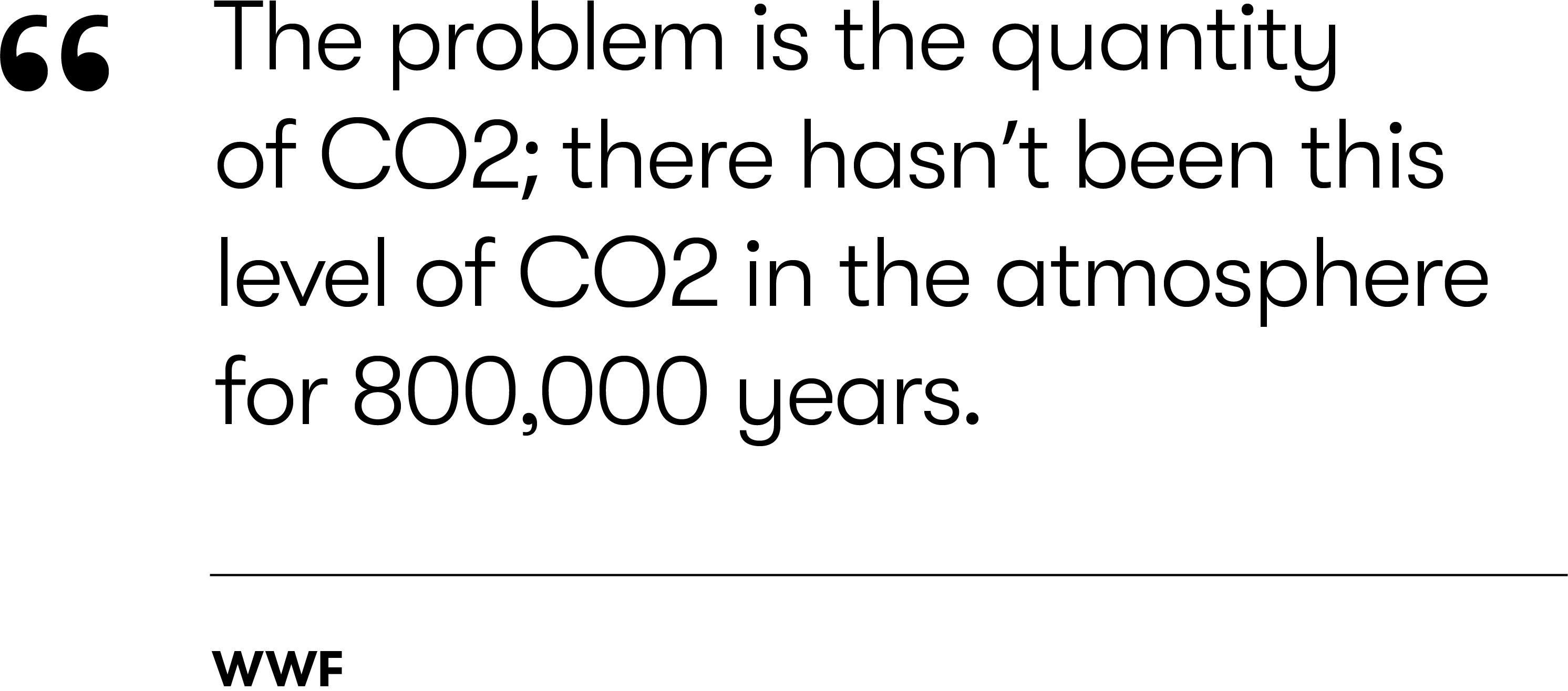
When fossil fuels are burnt, carbon turns into carbon dioxide – or CO2 – and is emitted into the atmosphere, where it becomes a huge contributor to global warming.
How can we produce less CO2 without sacrificing the efficacy of carbon-based products?

Deep within the pressurised core of dying stars, the building blocks of life are forged. Carbon, the fourth most abundant element in the known universe, is born from nuclear fusion inside red giants and is present in stars, comets and the atmospheres of most planets that we know about.
It’s the key ingredient for all life on Earth, and we’ve also learned to harness it: arranged one way, carbon molecules can be stronger than steel. Another, and they’re more flexible than rubber. Carbon is involved in everything from making printer ink and jewellery to the production of steel and cleaning products.
While carbon itself is naturally occurring, fossil fuel derived carbon presents a problem for our planet.

When fossil fuels are burnt, carbon turns into carbon dioxide – or CO2 – and is emitted into the atmosphere, where it becomes a huge contributor to global warming.
How can we produce less CO2 without sacrificing the efficacy of carbon-based products?
Many industries rely heavily on carbon – typically derived from fossil fuels – to produce a myriad of products and packaging, including the fashion, tech and cleaning industries.
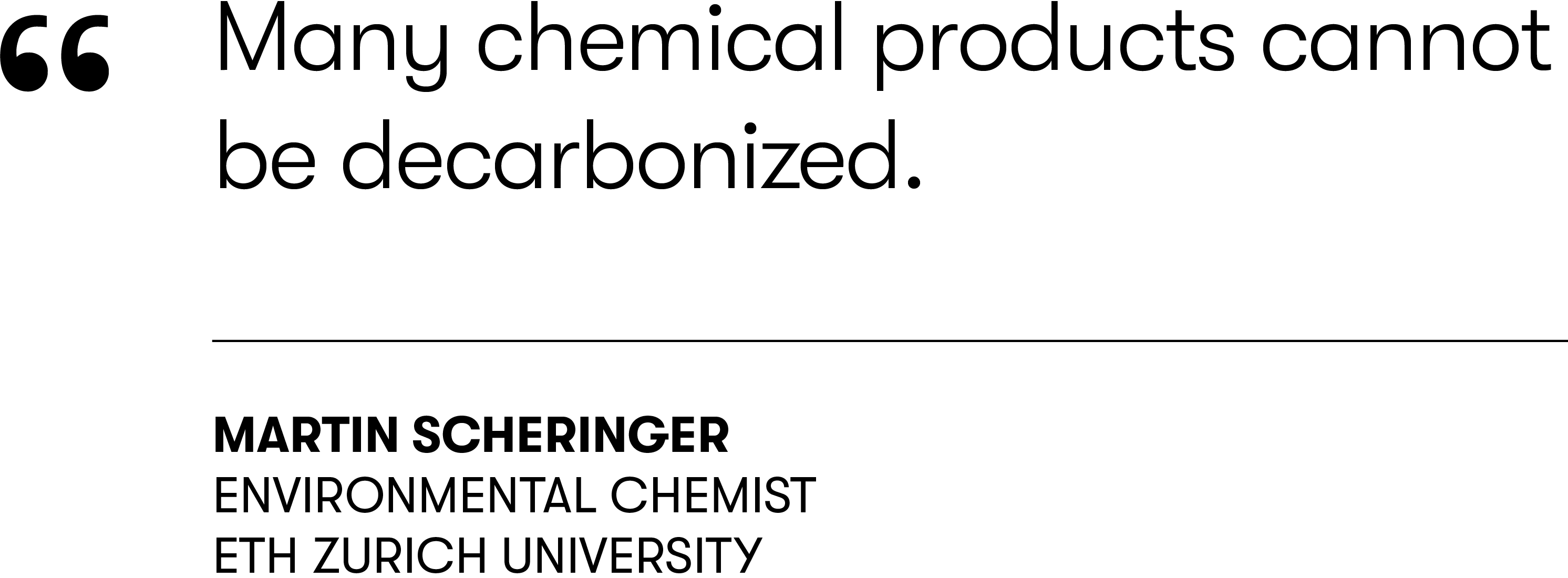
The ubiquity of these products means that the industry’s carbon footprint is significant: it consumes around 10% of fossil fuels produced globally1 and is estimated to release more than 2 gigatons2 of greenhouse gases annually as a result of the CO2 released during the production process.
And the carbon is not just used to create the product – it’s also embedded within the product. nova-Insitute reports3 that when it comes to “plastics, detergents and personal care solutions” the end of their lifecycle results in “most of the embedded carbon end[ing] up in the atmosphere as CO2.”
The prevalence of embedded carbon means that 450 million tonnes4 are produced per year – 85% of which is sourced from fossil fuels. Thought of as ‘black’ carbon, it’s derived from oil, coal and natural gas, and is widely recognised as needing to be replaced with more sustainable sources of carbon. This is where the commercial opportunity lies.
In other words, the businesses that don’t change won't last. The renewable and recycled ingredients of the future will enable businesses to move away from fluctuating commodity prices, like oil, and will help to future-proof and diversify supply chains. By taking the long view, businesses will be able to mitigate periods of volatility, such as the one caused by the Covid-19 pandemic.
Consumers are also demanding a shift from ‘black’ carbon. Over the last five years, there has been a 71% increase in online searches5 for sustainable goods globally, while a McKinsey study6 found that 75% of millennial consumers factor in sustainability when making purchases. There are no signs of this trend abating anytime soon.
Jessica Long, MD of Strategy and Sustainability at Accenture comments: “[It] reinforces the need for companies to increase their commitments to responsible business practices.”
Fortunately, circular carbon is not a pipe-dream. Renewable carbon does exist: sourced from renewable origins rather than virgin fossil fuel, it’s carbon that can be reused rather than emitted as CO2 into the atmosphere. But with only 15% currently coming from non-fossil fuel sources, the industry is not changing fast enough – or at a large enough scale.




The domestic cleaning industry relies heavily on carbon – typically derived from fossil fuels – to produce essential products like soap, detergents and cleaning agents, as well as product packaging.

The ubiquity of these products means that the industry’s carbon footprint is significant: it consumes around 10% of fossil fuels produced globally1 and is estimated to release more than 3 gigatons2 of greenhouse gases annually as a result of the CO2 released during the production process.
And the carbon is not just used to create the product – it’s also embedded within the product. nova-Insitute reports3 that when it comes to “plastics, detergents and personal care solutions” the end of their lifecycle results in “most of the embedded carbon end[ing] up in the atmosphere as CO2.”
The prevalence of embedded carbon means that 450 million tonnes4 are produced per year – 85% of which is sourced from fossil fuels. Thought of as ‘black’ carbon, it’s derived from oil, coal and natural gas, and is widely recognised as needing to be replaced with more sustainable sources of carbon. This is where the commercial opportunity lies.
Consumers are also demanding a shift from ‘black’ carbon. Over the last five years, there has been a 71% increase in online searches5 for sustainable goods globally, while a McKinsey study6 found that 75% of millennial consumers factor in sustainability when making purchases. There are no signs of this trend abating anytime soon.
Jessica Long, MD of Strategy and Sustainability at Accenture comments: “[It] reinforces the need for companies to increase their commitments to responsible business practices.”
Fortunately, circular carbon is not a pipe-dream. Renewable carbon does exist: sourced from renewable origins rather than virgin fossil fuel, it’s carbon that can be reused rather than emitted as CO2 into the atmosphere. But with only 15% currently coming from non-fossil fuel sources, the industry is not changing fast enough – or at a large enough scale.
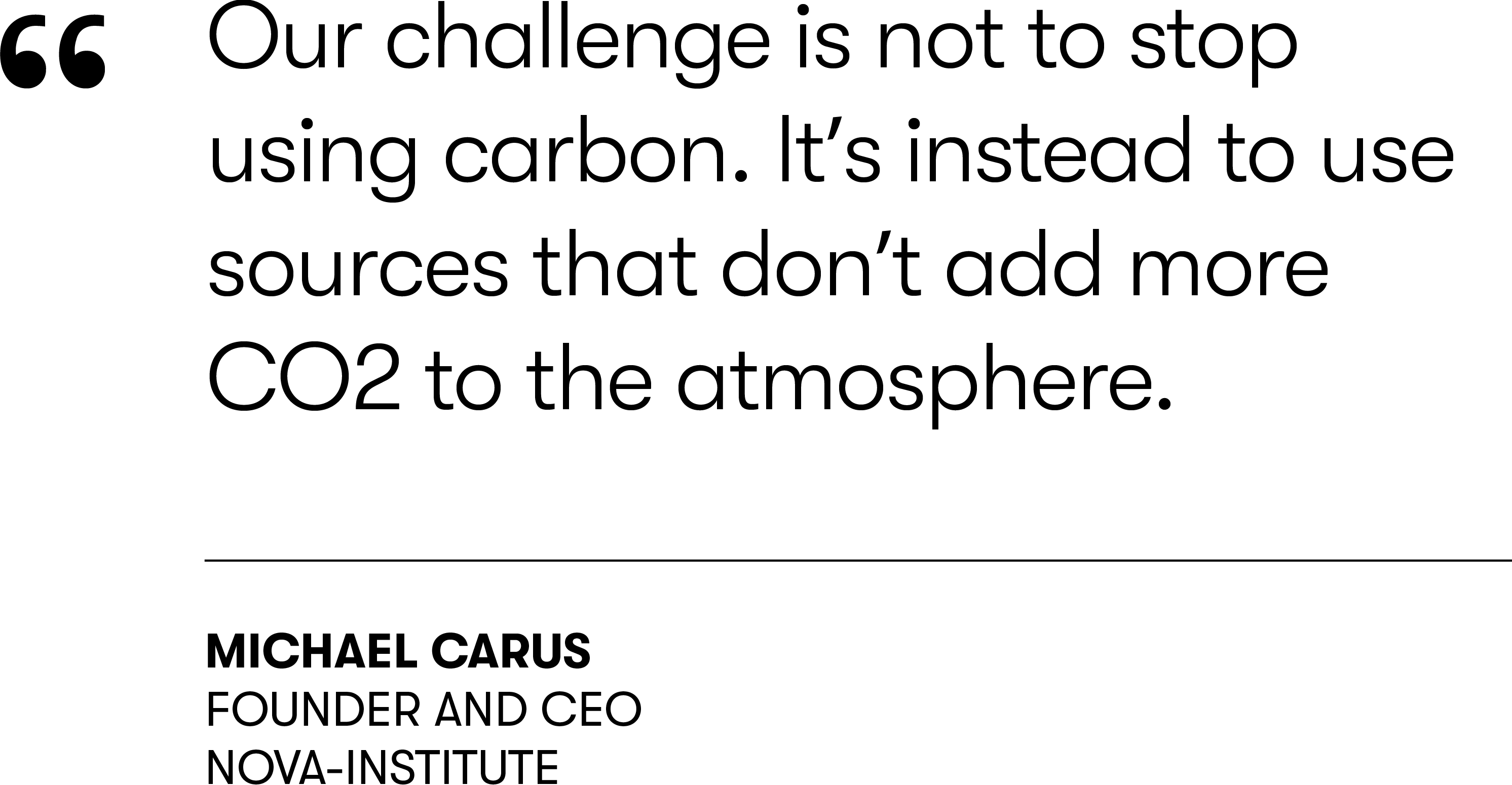
This solution is simple in thought, and complex in practice: keep carbon in the equation and take fossil fuels out. But Unilever, one of the world’s leading makers of household products, is making it a reality while providing the same – if not better – cleaning power in affordable products.
Instead of using the fossil fuel sourced ‘black’ carbon, Unilever is using carbon from sources already above the ground in its pioneering initiative: The Carbon Rainbow.

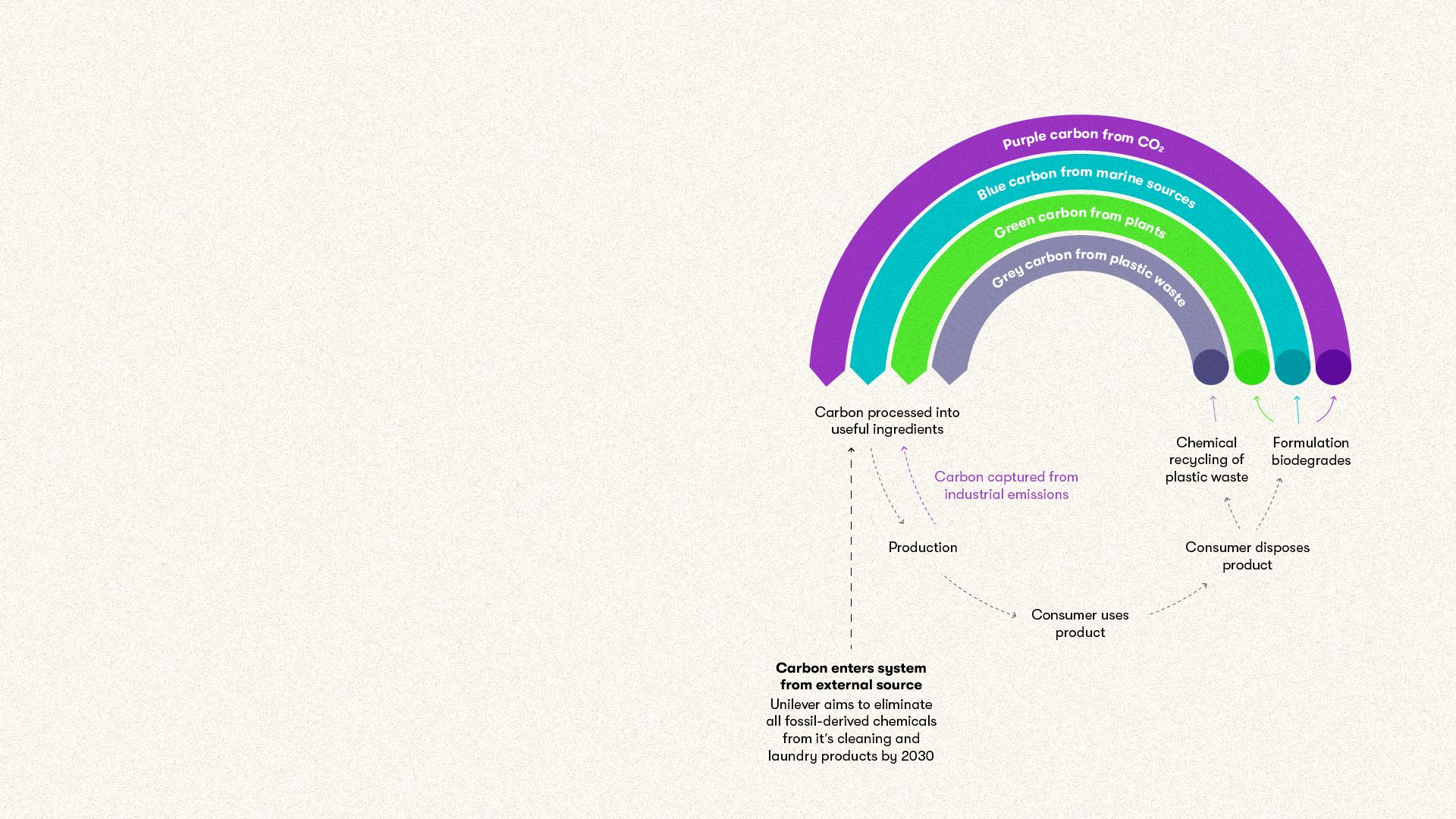

This solution is simple in thought, and complex in practice: keep carbon in the equation and take fossil fuels out. But Unilever, one of the world’s leading makers of household products, is making it a reality while providing the same – if not better – cleaning power in affordable products.
Instead of using the fossil fuel sourced ‘black’ carbon, Unilever is using carbon from sources already above the ground in its pioneering initiative: The Carbon Rainbow.
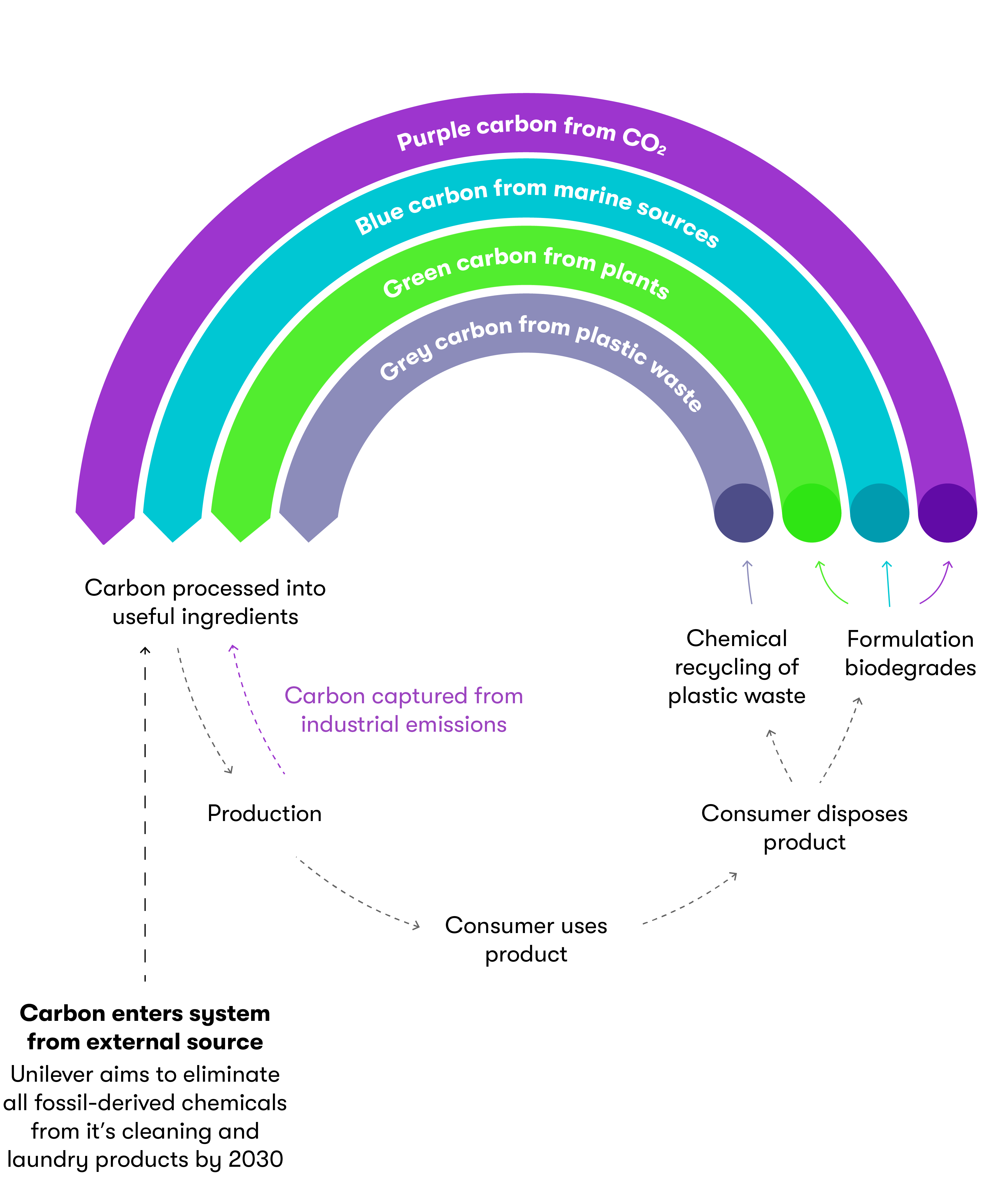
By 2050, the global demand for carbon for chemicals and derived materials is predicted to rise from 450 to 1,000 million tonnes.7

It’s therefore crucial that the carbon required for a growing global population is sourced not from fossil fuels, but from renewable origins. The nova-Institute projects8 that of the 1,000Mt of carbon that will be used annually by 2050:
55% could be sourced from recycling
25% could come from CO2-based sources
20% could be sourced from bio-based origins
By creating a cycle of renewable and reusable carbon, Unilever is dramatically reducing its reliance on fossil fuels to make effective and efficient cleaning products. It’s an important step towards the company’s goal of having net zero greenhouse gas emissions across the value chain by 2039.
And it’s something that can be replicated elsewhere. The Carbon Rainbow is proving that the entire chemical industry has the potential to change, modernise and contribute towards a better – and cleaner – future.
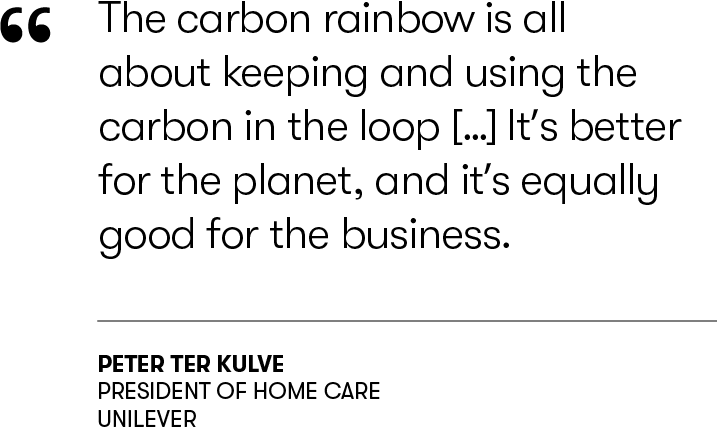

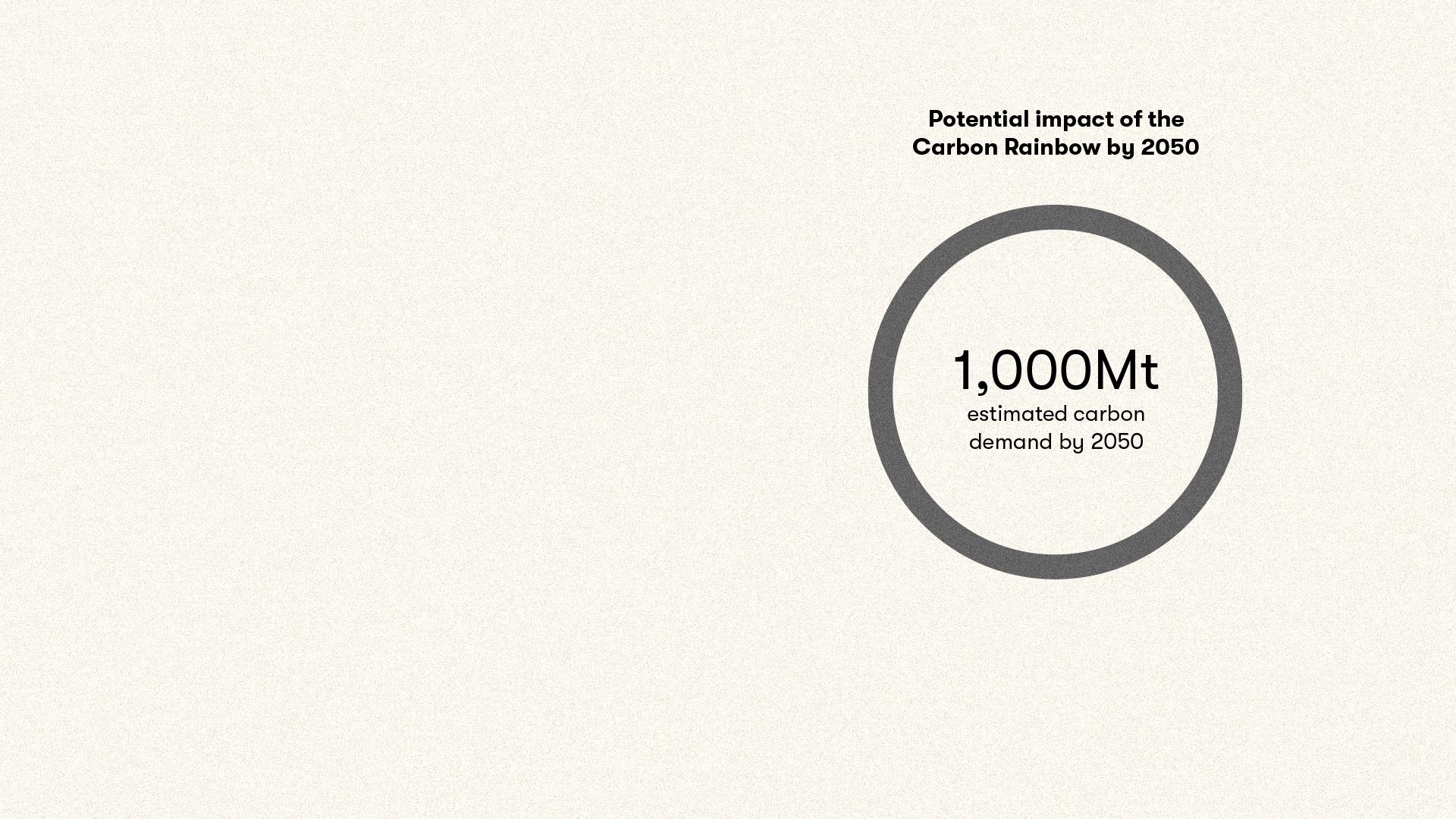
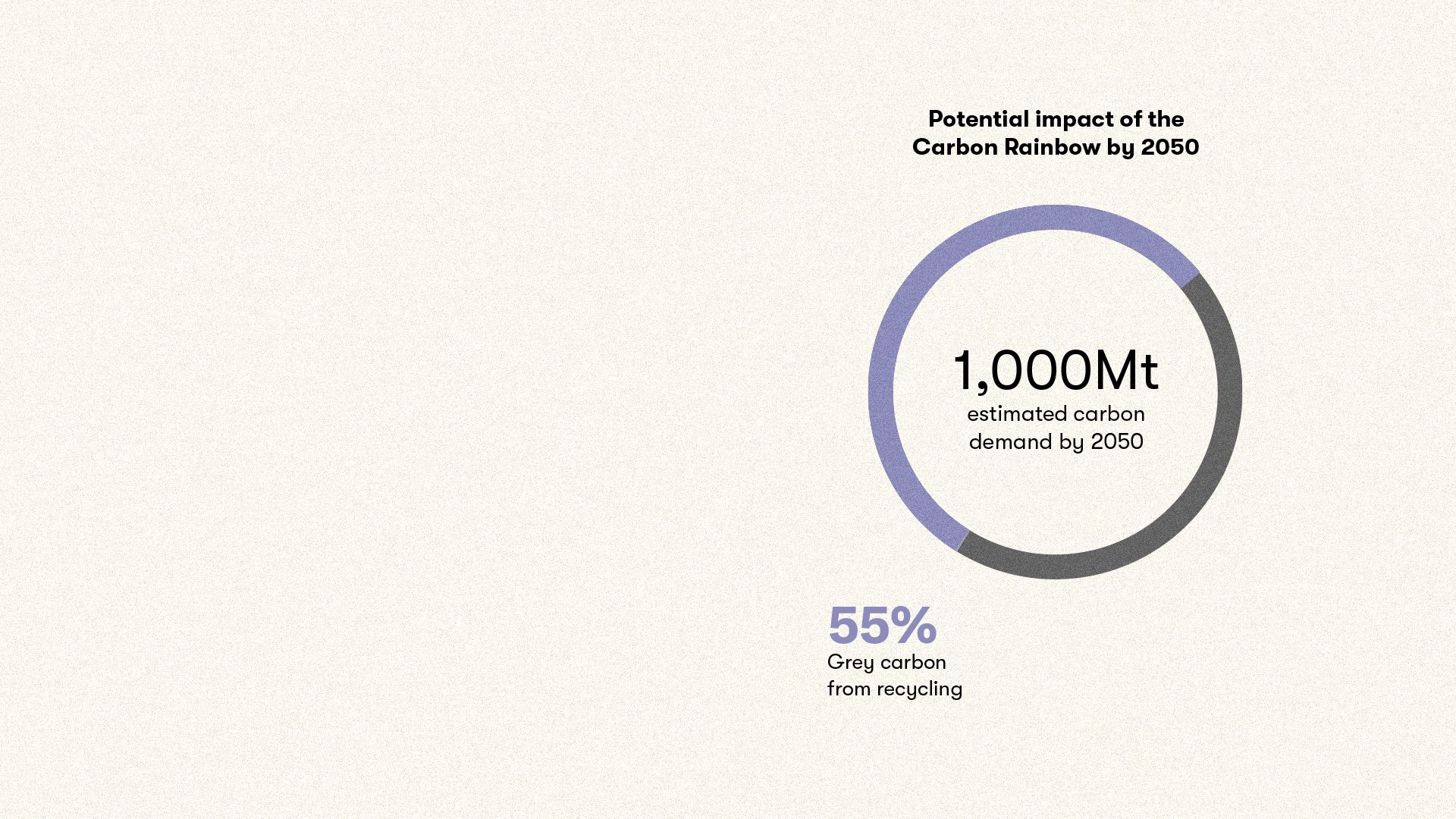
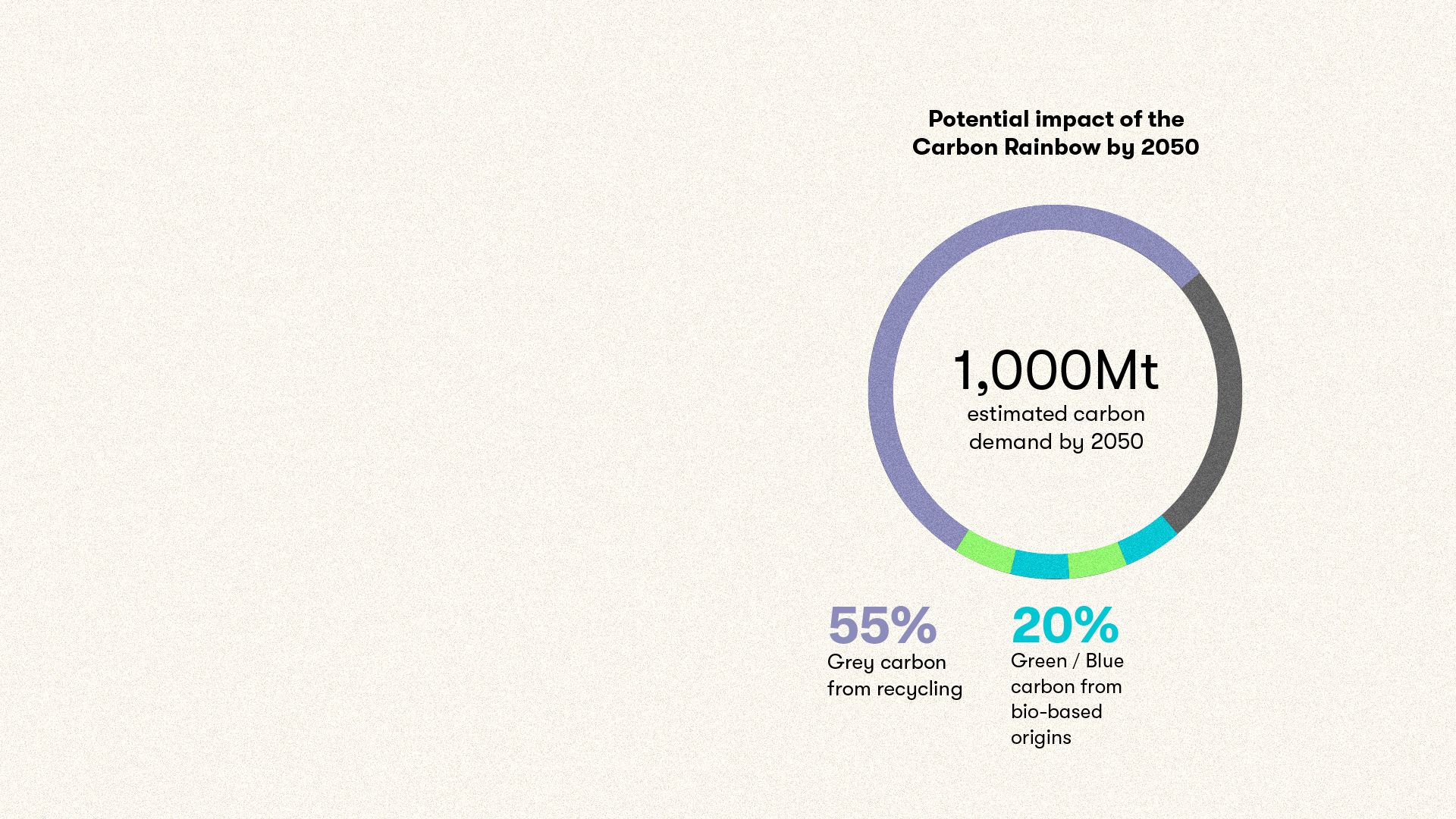
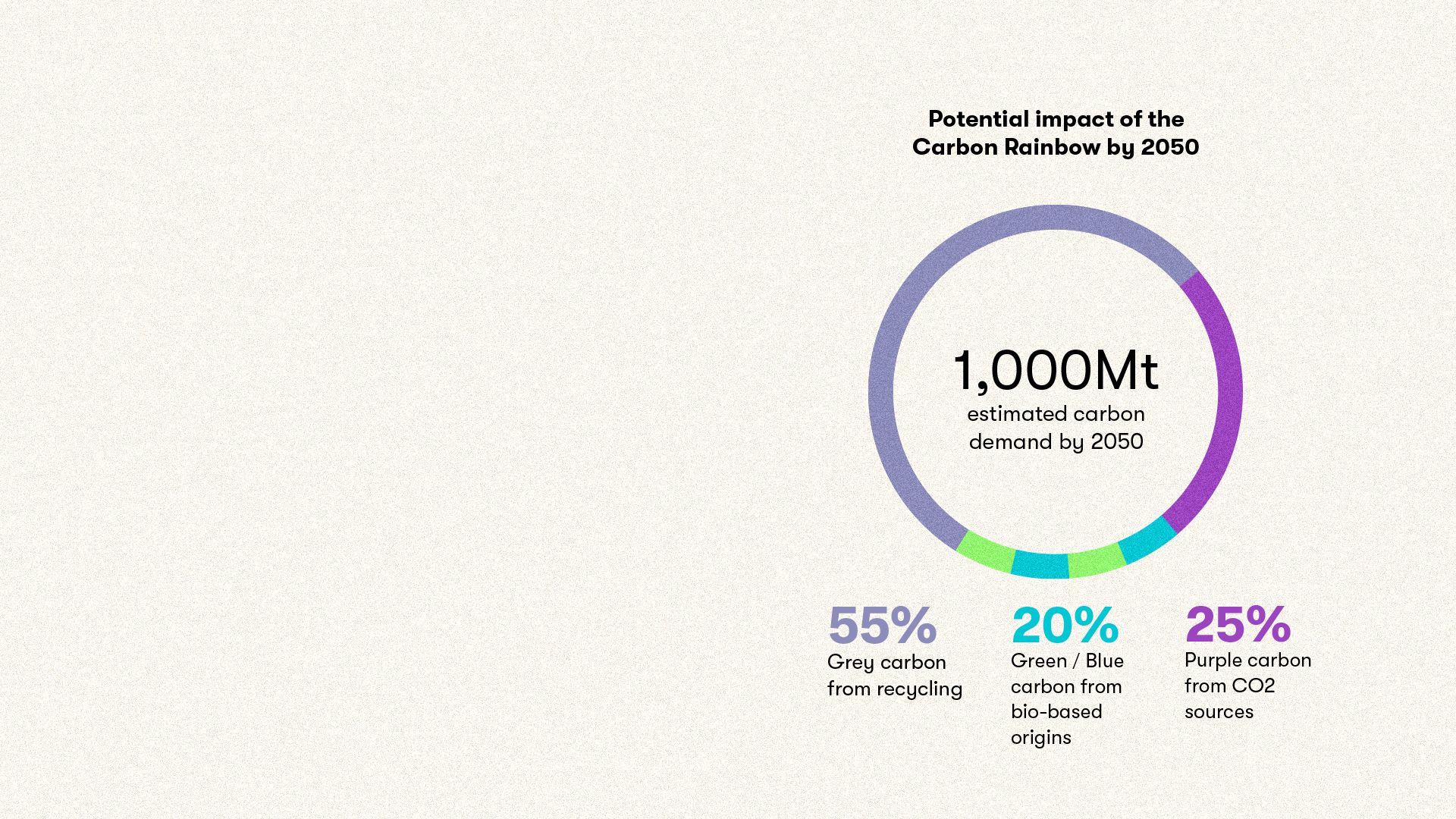
By 2050, the global demand for carbon for chemicals and derived materials is predicted to rise from 450 to 1,000 million tonnes.7

It’s therefore crucial that the carbon required for a growing global population is sourced not from fossil fuels, but from renewable origins. The nova-Institute projects8 that of the 1,000Mt of carbon that will be used annually by 2050:
55% could be sourced from recycling
25% could come from CO2-based sources
20% could be sourced from bio-based origins
By creating a cycle of renewable and reusable carbon, Unilever is dramatically reducing its reliance on fossil fuels to make effective and efficient cleaning products. It’s an important step towards the company’s goal of having net zero greenhouse gas emissions across the value chain by 2039.
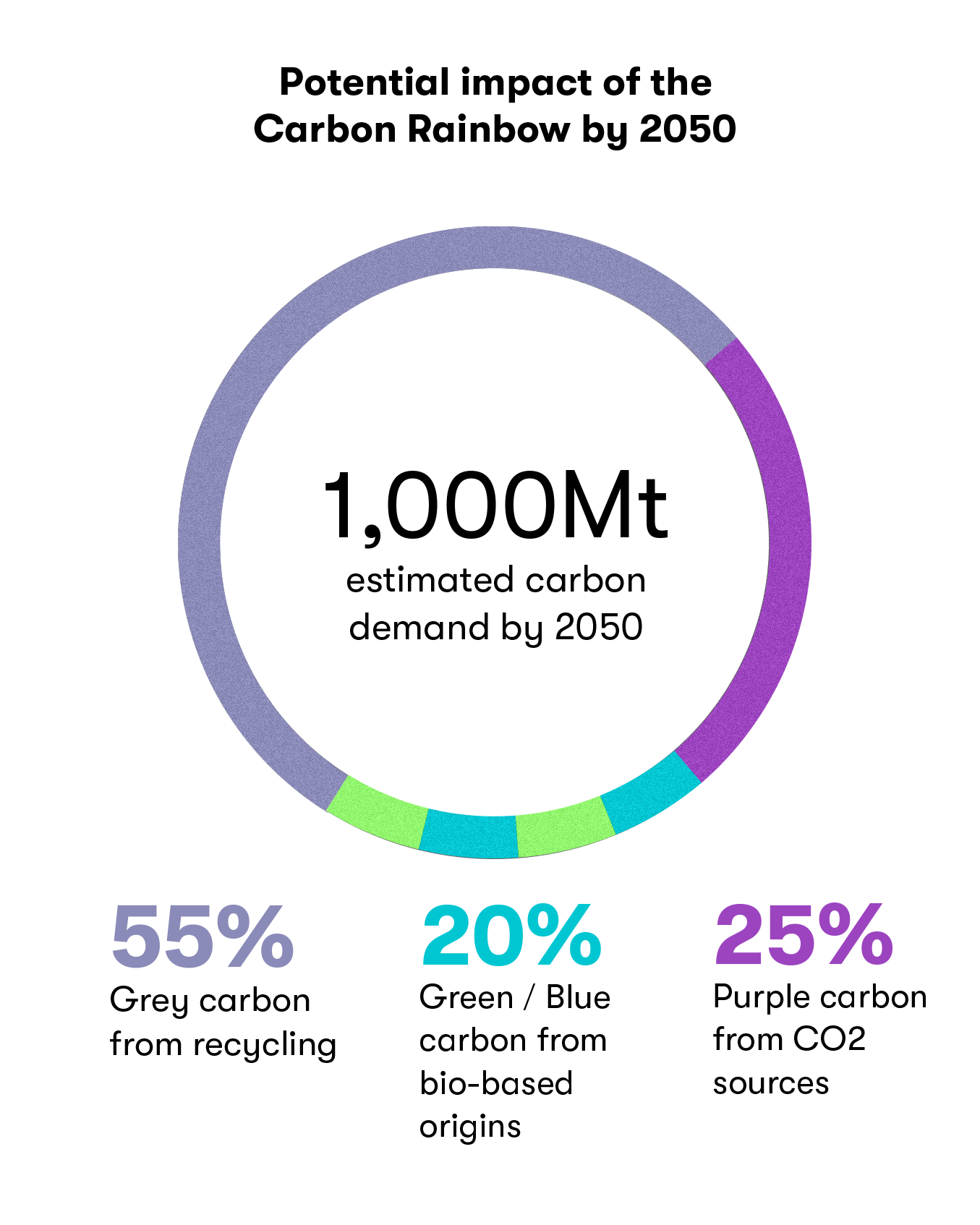
And it’s something that can be replicated elsewhere. The Carbon Rainbow is proving that the entire chemical industry has the potential to change, modernise and contribute towards a better – and cleaner – future.


Sources & further information
1. https://bellona.org/news/eu/2019-04-the-industrys-chemistry-with-climate-change#_edn2
2. https://www2.deloitte.com/xe/en/insights/industry/oil-and-gas/chemical-industry-emissions-reduction.html
3. https://www.unilever.com/files/5a9d4ed5-36ba-4bf1-af56-42367841343a/turning-off-the-tap-for-fossil-carbon-tcm244-561342-en.pdf
4. https://www.unilever.com/files/5a9d4ed5-36ba-4bf1-af56-42367841343a/turning-off-the-tap-for-fossil-carbon-tcm244-561342-en.pdf
5. https://www.businessnewsdaily.com/15087-consumers-want-sustainable-products.html
6. https://www.businessnewsdaily.com/15087-consumers-want-sustainable-products.html
7. https://www.unilever.com/files/5a9d4ed5-36ba-4bf1-af56-42367841343a/turning-off-the-tap-for-fossil-carbon-tcm244-561342-en.pdf
8. https://www.unilever.com/files/5a9d4ed5-36ba-4bf1-af56-42367841343a/turning-off-the-tap-for-fossil-carbon-tcm244-561342-en.pdf
